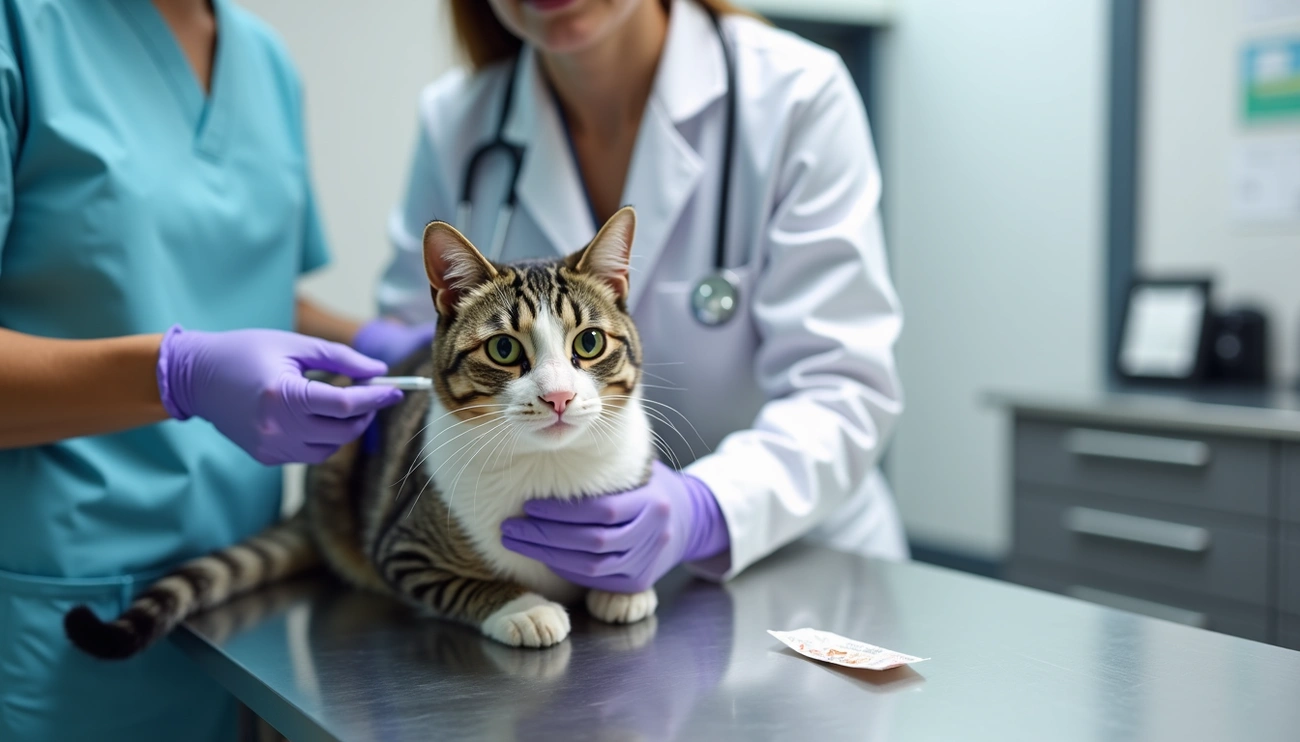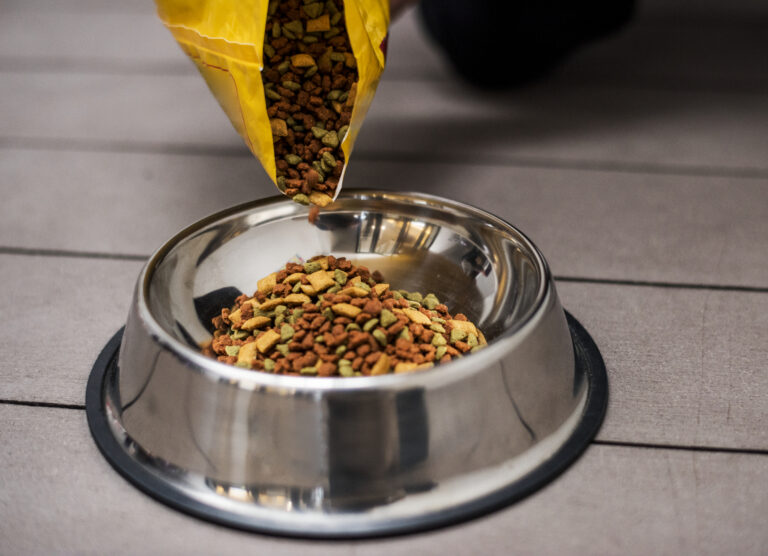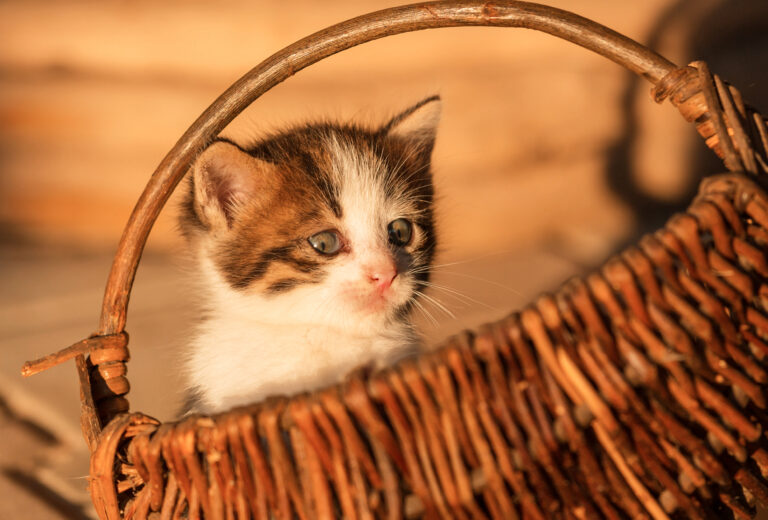Rabies Injection for Cats: Schedule, Cost, Benefits & Side Effects Explained
Rabies injection for cats isn’t just a recommended health measure—it’s a life-saving necessity. In fact, rabies is a deadly virus that affects the nervous system of mammals, including cats and humans. Once contracted, the prognosis for unvaccinated cats is grim, as the infection is almost always fatal.
Due to its serious nature, most states legally require all cats over six months of age to be vaccinated against rabies. The rabies vaccine schedule for cats typically begins with kittens receiving their first shot around 12 weeks of age, followed by a booster one year later. Additionally, newer vaccine options now provide protection for three years after the initial booster. This advancement gives us more flexibility when planning our pets’ healthcare routines.
Throughout this article, we’ll explore everything you need to know about rabies shots for cats—from different vaccine types and potential side effects to costs and legal requirements. Whether you have an indoor or outdoor cat, understanding rabies vaccination is essential for protecting both your feline friend and your family.
What Is Rabies and Why It’s Dangerous for Cats

Image Source: ResearchGate
Rabies represents one of the most lethal viral diseases affecting mammals worldwide. This neurotropic virus specifically targets the central nervous system, causing progressive brain inflammation that is almost always fatal once symptoms appear.
How rabies spreads among animals
The rabies virus primarily spreads through saliva, usually transmitted via the bite of an infected animal. However, the virus can also enter through open wounds or mucous membranes if they come in contact with infected saliva. Most commonly, cats contract rabies from encounters with wildlife carriers such as raccoons, skunks, bats, and foxes. These wild animals serve as reservoirs for the virus, maintaining its presence in the environment. Furthermore, any mammal can potentially transmit rabies, though certain species act as primary vectors in different geographic regions.
Why indoor cats are still at risk
Although keeping cats indoors significantly reduces their exposure risk, indoor cats are not completely immune to rabies threats. Firstly, bats—which are major rabies vectors—can enter homes through small openings in attics, chimneys, or broken screens. Moreover, indoor cats may occasionally escape or have unexpected outdoor encounters. Additionally, if your home has rodent problems, these animals could potentially carry rabies into your living space. Therefore, veterinarians strongly recommend rabies vaccination for all cats regardless of lifestyle, especially since rabies vaccine for cats provides crucial protection against this invariably fatal disease.
Symptoms of rabies in cats
Recognizing rabies symptoms in cats is essential, though by the time they appear, the disease has typically progressed beyond treatment. Initially, cats may exhibit subtle behavioral changes—becoming unusually aggressive or, conversely, abnormally docile. Subsequently, physical symptoms develop, including:
- Difficulty swallowing and excessive drooling
- Progressive paralysis, typically starting in the hindquarters
- Disorientation and seizures
- Hypersensitivity to light, sound, and touch
- Unusual vocalizations or changes in meow patterns
Notably, the classic “foaming at the mouth” occurs because the virus paralyzes throat muscles, making swallowing difficult. Throughout the disease progression, cats typically experience both “furious” phases (marked by aggression) and “dumb” phases (characterized by lethargy and paralysis) before eventually succumbing to the infection.
Types of Rabies Injection for Cats
Choosing the right rabies vaccine for cats involves understanding different formulations and their unique characteristics. Unlike human vaccines that rarely change, feline vaccine technology has evolved considerably over the years.
Killed virus vs recombinant vaccines
Veterinary professionals currently offer two main types of rabies vaccines for cats. Killed virus vaccines use an inactivated form of the rabies virus that stimulates immunity without causing disease. These traditional options have long been the standard for feline vaccination.
Recombinant vaccines, meanwhile, represent newer technology that uses only a portion of the rabies virus’s genetic material inserted into a harmless carrier virus. This innovative approach essentially tricks the immune system into developing protection without any risk of the vaccine causing rabies. Recombinant options typically provide comparable protection while offering improved safety profiles. Many experts now prefer recombinant vaccines because they eliminate any possibility of vaccine-induced infection.
Adjuvanted vs non-adjuvanted vaccines
Perhaps the most critical distinction between cat rabies vaccines involves adjuvants. Adjuvants are substances added to vaccines to boost immune response. While effective, traditionally adjuvanted vaccines became controversial after being linked to injection site reactions and a rare but serious condition called feline injection-site sarcoma (FISS) – cancerous tumors occurring at vaccination sites.
This concerning connection prompted the development of non-adjuvanted vaccines. As studies revealed adjuvants could trigger granulomas and chronic inflammation in cats, many veterinarians shifted toward non-adjuvanted options. According to research, approximately one to two out of every 10,000 vaccinated cats developed vaccine site sarcomas with adjuvanted vaccines. Consequently, non-adjuvanted formulations now represent the gold standard for feline rabies protection.
Newer 3-year vaccine options
Originally, only one-year rabies vaccines were available for cats, requiring annual revaccination. Fortunately, the veterinary world has made considerable progress with three-year vaccine options.
In 2014, a three-year Purevax recombinant non-adjuvanted rabies vaccine became available, offering extended protection without the risks associated with adjuvants. Similarly, products like Nobivac 3-Rabies provide protection that meets federal guidelines when challenged three years after vaccination.
The primary difference between one-year and three-year vaccines lies in their duration of immunity rather than composition. After initial vaccination and a one-year booster, the three-year formulations allow less frequent veterinary visits specifically for rabies protection.
Rabies Vaccine Schedule and Legal Requirements
Understanding proper rabies vaccination timing for cats helps protect both feline companions and public health. Proper scheduling follows specific guidelines based on age, previous vaccination status, and local regulations.
When kittens should get their first rabies shot
Kittens typically receive their first rabies vaccine between 12 and 16 weeks of age. Some vaccines can be administered as early as 8 weeks, depending on the specific product. Most states mandate initial vaccination by 3-4 months of age, though requirements vary. During their first year, kittens should follow a structured vaccination schedule that includes core vaccines like FVRCP alongside their rabies protection.
How often do cats need rabies vaccine
Following the initial vaccination, cats require a booster shot one year later—regardless of whether the initial vaccine had a 1-year or 3-year duration of immunity. After this crucial first-year booster, cats typically follow either an annual or triennial revaccination schedule, depending on the vaccine type used. Veterinarians often recommend the three-year formulation for healthy adult cats, as there’s no evidence that annual vaccination provides better protection.
State laws and vaccination certificates
Presently, 34 states legally require rabies vaccination for cats. State laws vary considerably—some mandate annual revaccination while others accept triennial schedules. Upon vaccination, your veterinarian must provide a rabies vaccination certificate containing specific information: your name and contact details, cat’s identification, vaccine details, and the veterinarian’s signature. This certificate serves as legal proof of compliance and may be required when registering pets, traveling, or responding to bite incidents.
Cost and Side Effects of Rabies Shots for Cats
Image Source: Helpful & Practical Pet Advice From the Hepper Blog – Hepper
The financial aspect of feline health care often concerns pet parents when planning for rabies protection. Alongside cost considerations, understanding potential side effects helps owners make informed decisions about this essential vaccination.
Rabies vaccine for cats cost breakdown
The price of rabies shots for cats varies based on location, vaccine type, and administration setting. Generally, cat rabies vaccine costs range between $25-$50 per dose. Some owners report paying as little as $15 for basic shots, whereas premium three-year non-adjuvanted vaccines might cost up to $70. Non-adjuvanted vaccines typically command higher prices than adjuvanted alternatives. Indeed, many veterinarians absorb some cost difference rather than passing it to clients.
Common mild side effects
After receiving rabies vaccinations, cats may experience temporary mild reactions. These typically include slight fever, lethargy, decreased appetite, and localized swelling at the injection site. Fortunately, such reactions usually disappear within a few days without intervention. Overall, post-vaccination side effects remain quite uncommon—studies indicate that adverse reactions occur at a rate of approximately 52 per 10,000 cats vaccinated.
Rare but serious reactions
In extremely uncommon cases, cats might develop severe reactions to rabies vaccines. Anaphylactic reactions, characterized by facial swelling, itchiness, and breathing difficulties, occur in fewer than 10 cats per 10,000 vaccinated. Another rare concern is injection-site sarcoma, a type of cancer that develops at vaccination sites at rates of 1-10 cases per 10,000 cats. Vaccine-associated fibrosarcomas can develop anywhere from weeks to a year post-vaccination.
How vets help manage risks
Veterinarians employ several strategies to minimize vaccination risks. For cats with previous reactions, pre-medication with antihistamines or corticosteroids often prevents allergic responses. Many vets now strategically place vaccines in locations that would make tumor removal easier if necessary—such as low on a limb instead of between shoulder blades. The “3-2-1 rule” helps monitor injection sites: investigate lumps that remain for 3 months, exceed 2 cm, or grow within 1 month.
Conclusion
Rabies vaccination stands as a critical component of responsible cat ownership, regardless of whether your feline friend lives indoors or outdoors. As we have seen, this deadly virus presents a serious threat not only to cats but also to humans, with almost 100% fatality rate once symptoms appear. Therefore, maintaining proper vaccination schedules protects both your beloved pet and your family.
Understanding the different vaccine options certainly helps make informed decisions for your cat’s health. Non-adjuvanted, recombinant vaccines have emerged as the safer alternative, significantly reducing the risk of injection-site sarcomas while providing effective protection. Additionally, the development of three-year vaccines has made the vaccination process more convenient for cat owners, requiring fewer veterinary visits after the initial series.
Most importantly, rabies vaccination remains a legal requirement in most states, with good reason. The cost—typically between $15 and $70—represents a small price compared to the invaluable protection it provides. Though side effects occasionally occur, they usually remain mild and temporary, whereas the consequences of skipping vaccination could be devastating.
Remember to follow your veterinarian’s recommendations regarding your cat’s specific vaccination schedule. Regular rabies shots, along with proper documentation, ensure your cat stays healthy and compliant with local regulations. After all, this simple preventative measure ultimately saves lives—both feline and human.
Key Takeaways
Understanding rabies vaccination for cats is essential for protecting both your pet and family from this deadly virus that’s almost always fatal once symptoms appear.
• Vaccination is legally required: 34 states mandate rabies shots for cats, with initial vaccination needed by 12-16 weeks of age and boosters following specific schedules.
• Choose non-adjuvanted vaccines: These safer options significantly reduce injection-site sarcoma risk while providing equal protection compared to traditional adjuvanted vaccines.
• Indoor cats need protection too: Even house cats face rabies exposure from bats entering homes or unexpected outdoor encounters, making vaccination crucial regardless of lifestyle.
• Costs are manageable: Rabies shots typically cost $25-50 per dose, a small investment compared to the life-saving protection they provide.
• Side effects are rare: Most cats experience only mild, temporary reactions like lethargy or injection site swelling, while serious complications occur in fewer than 1 in 1,000 cats.
The three-year vaccine option now available reduces the frequency of veterinary visits while maintaining complete protection, making rabies prevention more convenient than ever for responsible cat owners.
FAQs
Q1. Are rabies shots necessary for indoor cats? Yes, rabies vaccinations are essential for all cats, including indoor ones. Even house cats can be exposed to rabies through encounters with bats that enter homes or during unexpected outdoor excursions. Additionally, most states legally require rabies vaccinations for all cats over six months old.
Q2. What are the common side effects of rabies vaccines in cats? Most cats experience only mild, temporary reactions to rabies vaccines. These can include slight fever, lethargy, decreased appetite, and localized swelling at the injection site. These effects typically resolve within a few days without intervention.
Q3. How often do cats need rabies vaccinations? Kittens typically receive their first rabies shot around 12-16 weeks of age, followed by a booster one year later. After that, cats may follow either an annual or triennial revaccination schedule, depending on the type of vaccine used and local regulations.
Q4. What is the average cost of a rabies vaccine for cats? The cost of rabies vaccines for cats generally ranges from $25 to $50 per dose. However, prices can vary based on location, vaccine type, and administration setting. Some basic shots may cost as little as $15, while premium three-year non-adjuvanted vaccines might cost up to $70.
Q5. How long does it take for a rabies vaccine to become effective in cats? Rabies vaccines typically take about 28 days to provide full immunity in cats. During this period, the cat’s immune system develops a response to the vaccine. It’s important to note that even after vaccination, regular boosters are necessary to maintain protection against rabies






